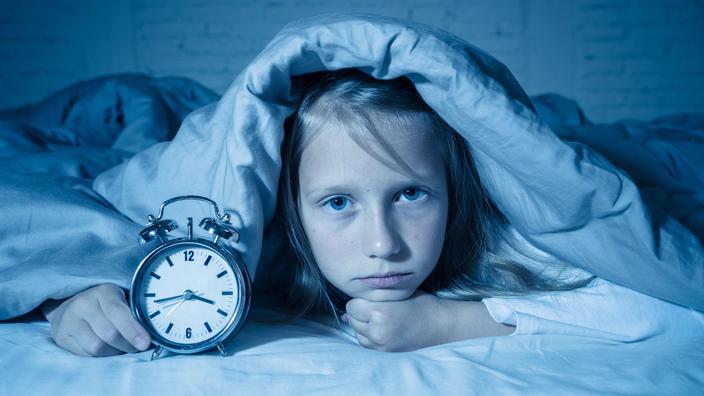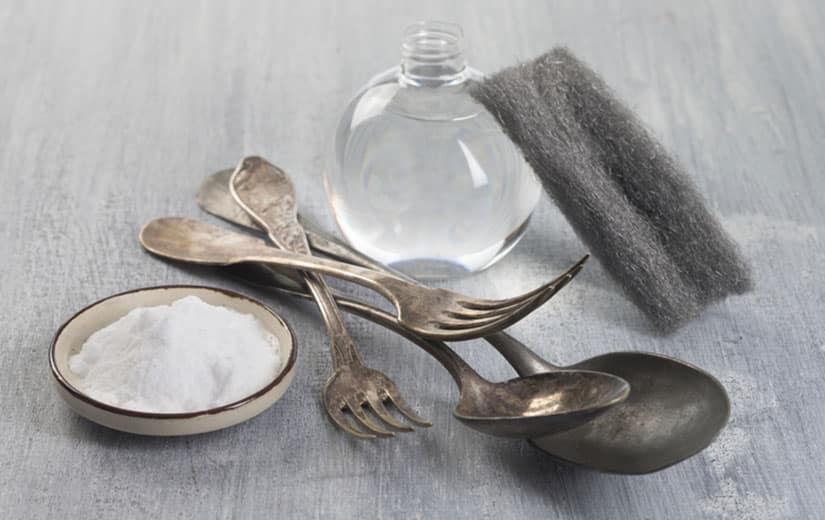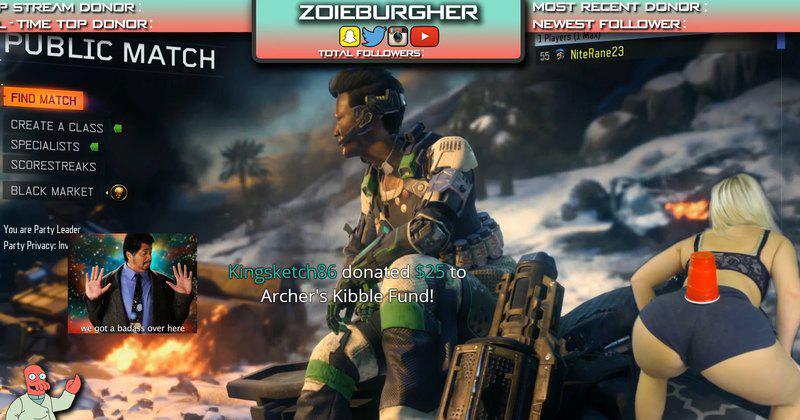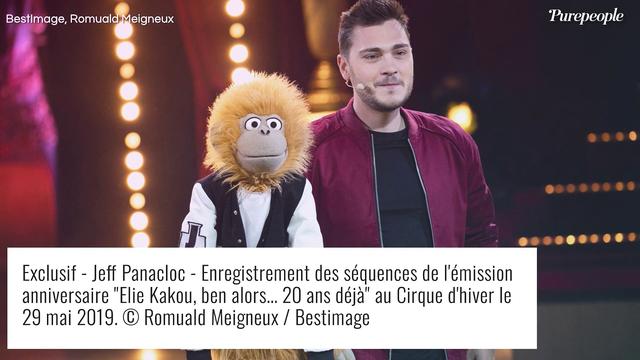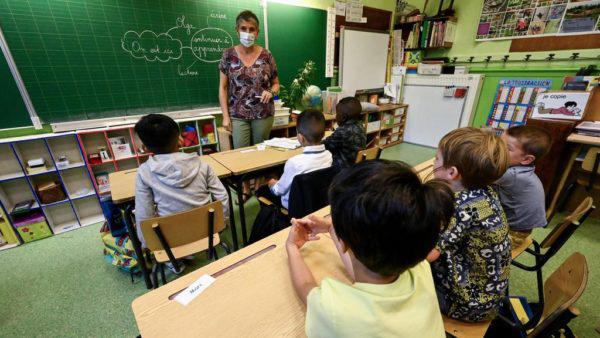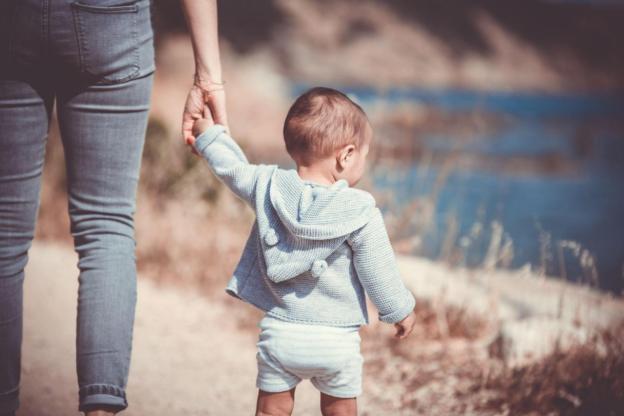
A turnstile accident in the schoolyard, a concussion, two days of hospitalization, and then, as the weeks go by, a mother who worries more and more because her little boy, Tom, 5 years old and a half, does not recover. "He was tired, anemic," says Julie Marty. The diagnosis came in mid-January 2014: "Acute lymphoblastic leukemia. The pediatrician had already made an appointment for us in Nice. When we arrived, a nurse was waiting for Tom in front of the elevator, and there was already his name on the door of his room."
A huge shock for his mother, who expected to go home with him after a day of exams. "He went to the block directly for the placement of a central catheter. I called my husband. It was very complicated for me. I lost a childhood friend, with this same disease. I have everything I immediately asked a lot of questions, and a doctor took the time to answer me, clearly understanding the situation. Long months of treatment begin. Once considered, the transplant will not be necessary. “The whole family had exams, including her two-and-a-half-year-old little sister, says Julie. It was a real case of conscience and somewhere, I was relieved that she was not compatible.
After nine months of chemo, "we were trusted and the house became a hospital. For two years. We had to constantly monitor the fever and come back at the first alert. We washed before going to see him, my husband was undressing in the hallway on his way home from work… It was very hard but the payoff was that our relationship became very strong.When we had to swallow the pills - up to 14! , Tom told me: "We're going to get there. We don't ask ourselves questions. We move forward day after day and we lock ourselves in a bubble of ourselves. We make a good figure."
"I was not aware of the seriousness of my illness"
Tom, who is 17 today, remembers this period: the care at night which prevented him from sleeping, the noise of machines running, the fact of not coming home often, and certain care, such as a tube stuck down his throat. But, he says, "I was not aware of the seriousness of my illness. I knew that I was sick, that it affected the whole family, but it was more the heaviness of the daily situation than its gravity. which marked me. You have to find the positive where it is, focus on an activity. For me it was [the video game that makes you do physical exercises] Wii Fit, so I could move!
How to Disinfect a Wound https://t.co/YOcIbXdQAI https://t.co/m1jJwR8D7o
— Daily News Fri Dec 16 15:08:35 +0000 2016
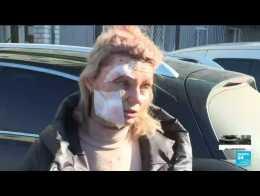
He didn't really miss school. "Often, we did care in pairs. So we socialize, even if it's complicated when you're little. We're not used to going to others." He also remembers "the clowns, the animations which made it possible to deceive boredom". These were good times, rarer than in the usual daily life of children. A daily life of which he realizes that his little sister has also been deprived, "a little too much!" "She had an understanding of the situation and I think it traumatized her."
Their mother agrees. “Romane was a nice little girl, a gem. But as a teenager, we discovered that she had anxieties, blockages. It took support for things to get back to normal, confides her mother "Whether we like it or not, we pay less attention to other children, admits Julie. When Tom fell ill, some school friends developed anxiety, with wetting the bed, things like that. So I kept a blog, to give news. It was too complicated to call everyone."
Five years after his treatment ended, Tom was declared cured. In the meantime, a little brother had joined the family. "It was our initial project, before the illness. When we started to see the end of the tunnel, Tom demanded, and we wanted to show the children that life goes on." Félix was born a few days after the announcement of the cure, in very specific conditions. "It was a scheduled delivery to be able to collect the blood from the cord, which can possibly serve as a graft in the event of a relapse or a problem in the siblings, explains Julie. We did not have a third child for that, but we didn't didn't want to waste this opportunity."In the end, this approach caused real disappointment."This type of transplant can be considered up to a certain weight of the child. When our three children have exceeded this limit and that it was clear that the cord blood would not be used for them, we wanted to donate it. But it was not allowed. I find that unacceptable."
Regular monitoring
Today, Tom is still followed regularly. "Up to the age of 40, we monitor his retina and the valves of his heart because of the potential side effects of the treatments. He was too young, but in adolescents, the treatments have an impact on puberty. The samples to anticipate a future sterility are frequent", specifies Julie. "The follow-up is nothing compared to the constraints of the disease, says Tom, who bluntly affirms that he has moved on. As I am well followed, on the contrary, I feel more protected than others. If there was ever something serious, it would not go unnoticed!"
The young man, who dreams of a paramedical career as a psychomotrician, also regularly participates in studies. “One of them studies the possible link between a physical and emotional shock (the tourniquet accident) and the dysfunction of the production of white blood cells by the marrow. Another research focuses on factors at the genetic level” , explains Julie Marty. "If I can help, it is with pleasure, completes Tom. It was not the worst cancer, I saw much worse in the hospital." That's why, he said, he didn't mind swallowing tablets. "For me, the most effective way is the best. Too bad if the tablets are too big. Anyway, I had no choice. But it would be good if research looked into the subject to suggest things that are more child-friendly!"

